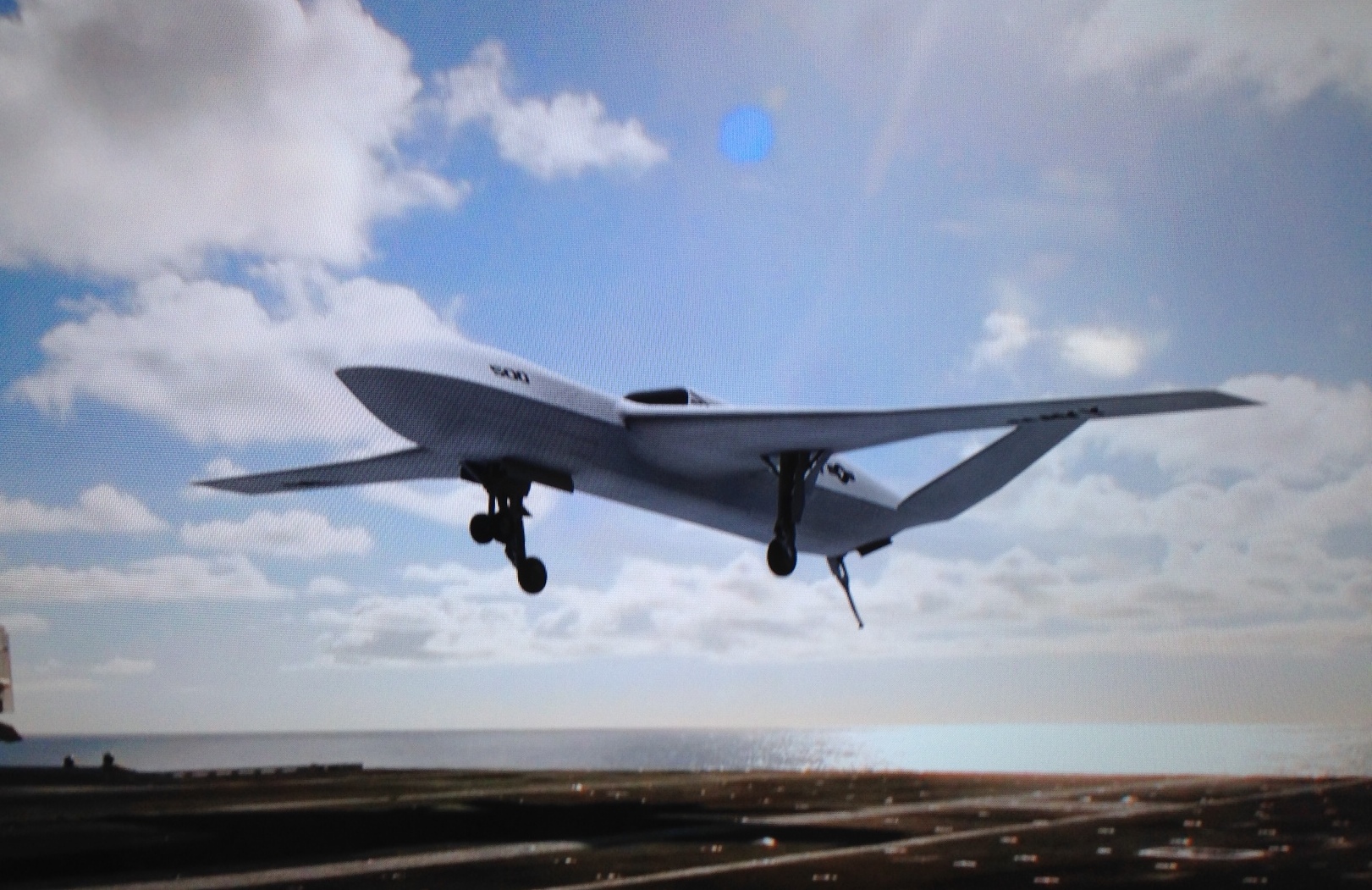
General Atomics showed off images and a model of what appears to be a slightly modified version of its Sea Avenger unmanned concept aircraft at the Navy League Sea Air and Space exposition.
That might suggest the company intends to submit a design for based on the Sea Avenger airframe for the Navy’s Unmanned Carrier Launched Airborne Surveillance and Strike (UCLASS) aircraft program.
Four years ago when the Navy leadership first proposed the UCLASS program, General Atomics had aggressively pitched the Sea Avenger — based of its jet-powered Predator C variant — for the service’s nascent requirements.
Then, as it is now, there were those who favored a high-end strike aircraft, while others preferred an intelligence surveillance and reconnaissance (ISR) machine designed to operate in permissive airspace.
While it now appears that those in favor of a modest capability to perform ISR inside uncontested airspace and hit targets of opportunity have carried the day, no one outside the Navy and contractor teams will know for certain what the UCLASS specification call for because the service intends to keep that information classified.
“The draft RFP will be classified,” said Rear Adm. Mat Winter, Naval Air Systems Command’s program executive officer for unmanned aviation and strike weapons at the conference on Tuesday.
If the Navy’s requirements eschew broadband stealth in favor of a platform that is optimized for ISR in permissive airspace, General Atomics’ Sea Avenger design could find itself as one of the leading contenders.

In 2010, when General Atomics was still openly pitching the Sea Avenger design, Chris Ames, who was then the director of strategic development at the company told Defense News/C4ISR Journal that while it would not be a stealth aircraft, the Sea Avenger would “have a reduced signature, so it’s stealthier than other aircraft.”
Even if General Atomics has allowed for potential grown in terms of stealth capability on the Sea Avenger, as a simple matter of physics, it would have to be optimized for low observables in the higher frequencies such as the C, X and Ku bands.
Broadband stealth that would be effective again low frequencies such as the VHF or UHF band virtually dictate a flying wing platform. At the time, Ames has stated that the Sea Avenger would be optimized for irregular and hybrid warfare scenarios—which was a nascent Navy requirement even in 2010.
Other notable features of the current iteration of the Sea Avenger — according to the images on display —are at least four external hardpoints and a small weapons bay. Sea Avenger also appears to be capable of performing the aerial refueling tanker role using a wing-mounted buddy-refueling store. Meanwhile, some of the concept of the new Sea Avenger variant appears to be considerably larger than the older incarnation—which suggest a larger engine.
Ultimately time will tell which design was successful. Lockheed Martin and Northrop appear to be pitching broadband stealth capable flying-wing designs while General Atomics and Boeing appear to be pitching wing-body-tail concept optimized for more modest threat environments.






